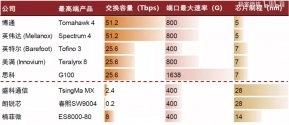面对上游霸权高压,爆发者有之,沉默者有之,待时而动者或许亦不鲜见。相对来说,始终按兵不动的国产ARM厂商显得分外无奈。
众所周知,国产中的华为与飞腾两大ARM厂商已经断供多年,持续迭代之路基本阻断,仅靠原有芯片库存支应绝非长久之计。但是国内ARM存量市场何其庞大,千辛万苦建立起来的用户规模和生态基础,想要一朝改换门庭谈何容易。
前段时间曝出鲲鹏与飞腾生态合并的消息,不难猜测这是国产ARM临危抱团稳了一手,期望以生态扩张和芯片共享的形式,延缓ARM版本停滞及库存危机,两大厂商暂时还未下出关键的胜负手。
风雨飘摇中稳字当头的选择毋庸置喙。但是市场风云诡谲不可不察,国产ARM的现实问题正在变得越来越糟。
最近ARM方面有新消息传出,除对、等少数几家特殊的厂商外,Arm或对其他CPU厂商采取更严格的授权限制,即如果使用了Arm的CPU核,那么使用、NPU、ISP等IP核必须全部采用Arm的技术,不得使用第三方架构,否则将无法获得授权。对国产CPU厂商来说,原本就渺茫的授权获取希望已成绝望。
伴随着版本停滞的时间拉长,国产ARM与主流芯片性能的差距也将越来越大。对内,阿里、、中兴等厂商已拿到ARM V9版本,相较于V8.2提升了约30%的综合性能,即便鲲鹏等厂商可以通过微调改进、堆核等方式强行弥补,但也会造成成本上的巨大压力。
对外,X86的综合性能一向领先,ARM V9排除功耗优势外也很难与其比肩,落后整整一代的ARM V8.2只会将国产ARM拽入深渊。
另外,已经将目光瞄向ARM存量市场的RISC-V又岂能甘附骥尾,其迅猛的发展势头不仅为中国厂商带来了希望,也给困守孤岛的国产ARM带来更大的危机感。
试想一下,接下来如高通等ARM厂商纷纷揭竿而起另立山头,再有RISC-V阵营快速崛起赶超,若只有国产ARM厂商原地踯躅,届时相关厂商的处境将变得无比尴尬。
很难讲现在的高通是不是干了国产厂商最该干的事,不管前路如何,留给国产ARM的窗口期真的不多了。
Facing the high pressure of upstream hegemony, there are those who break out, those who are silent, and those who wait for the time to move may not be uncommon. Relatively speaking, the domestic ARM manufacturers who have been holding back all the time seem extremely helpless.
As we all know, Huawei and Phytium, the two major ARM manufacturers of domestic CPUs, have been out of supply for many years, and the road to continuous iteration is basically blocked. Relying on the original chip inventory is by no means a long-term solution. However, the domestic ARM stock market is so huge, and the user scale and ecological foundation established through untold hardships, it is not easy to change the door once.
Some time ago, the news of the ecological merger between Kunpeng and Feiteng was exposed. It is not difficult to guess that this is the domestic ARM holding together in the face of danger. It is expected to delay the stagnation of the ARM version and the inventory crisis in the form of ecological expansion and chip sharing. The two major manufacturers have not released yet. Make the key winner.
There is no doubt about the choice of the word "steady" in the wind and rain. However, the market situation is treacherous, and the actual problems of domestic ARM are getting worse.
Recently, there is new news from ARM. Except for a few special manufacturers such as Apple and Samsung, Arm may adopt stricter authorization restrictions on other CPU manufacturers, that is, if Arm’s CPU core is used, then the use of GPU, NPU , ISP and other IP cores must all use Arm technology, and third-party architectures are not allowed, otherwise they will not be authorized. For domestic CPU manufacturers, the originally slim hope of obtaining authorization has become hopeless.
With the prolonged version stagnation, the performance gap between domestic ARM and mainstream chips will also become wider and wider. Internally, manufacturers such as Ali, Xiaomi, and ZTE have obtained the ARM V9 version, which has improved the overall performance by about 30% compared with V8.2. There will be enormous pressure on costs.
Externally, the comprehensive performance of X86 has always been leading, and it is difficult for ARM V9 to match it except for its power consumption advantage. ARM V8.2, which is a whole generation behind, will only drag domestic ARM into the abyss.
In addition, how can RISC-V, which has already set its sights on the ARM stock market, be willing to follow suit? Its rapid development momentum not only brings hope to Chinese manufacturers, but also brings a greater sense of crisis to the domestic ARM that is trapped in an isolated island. .
Just imagine, ARM manufacturers such as Qualcomm will rise up one after another, and the RISC-V camp will rise rapidly to catch up. If only domestic ARM manufacturers stay in place, the situation of relevant manufacturers will become extremely embarrassing.
It's hard to say whether the current Qualcomm has done what domestic manufacturers should do most. No matter what the road ahead is, the window period left for domestic ARM is really running out.

